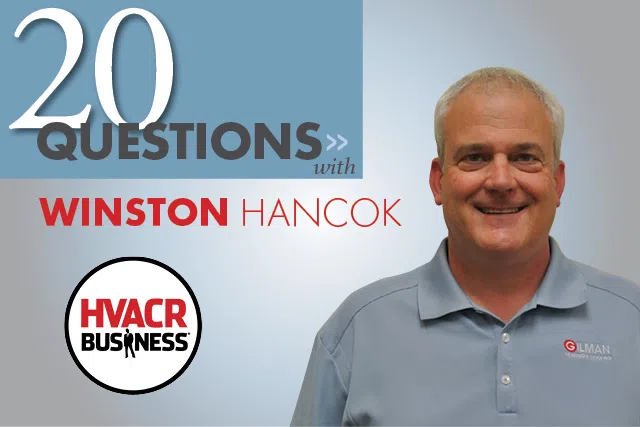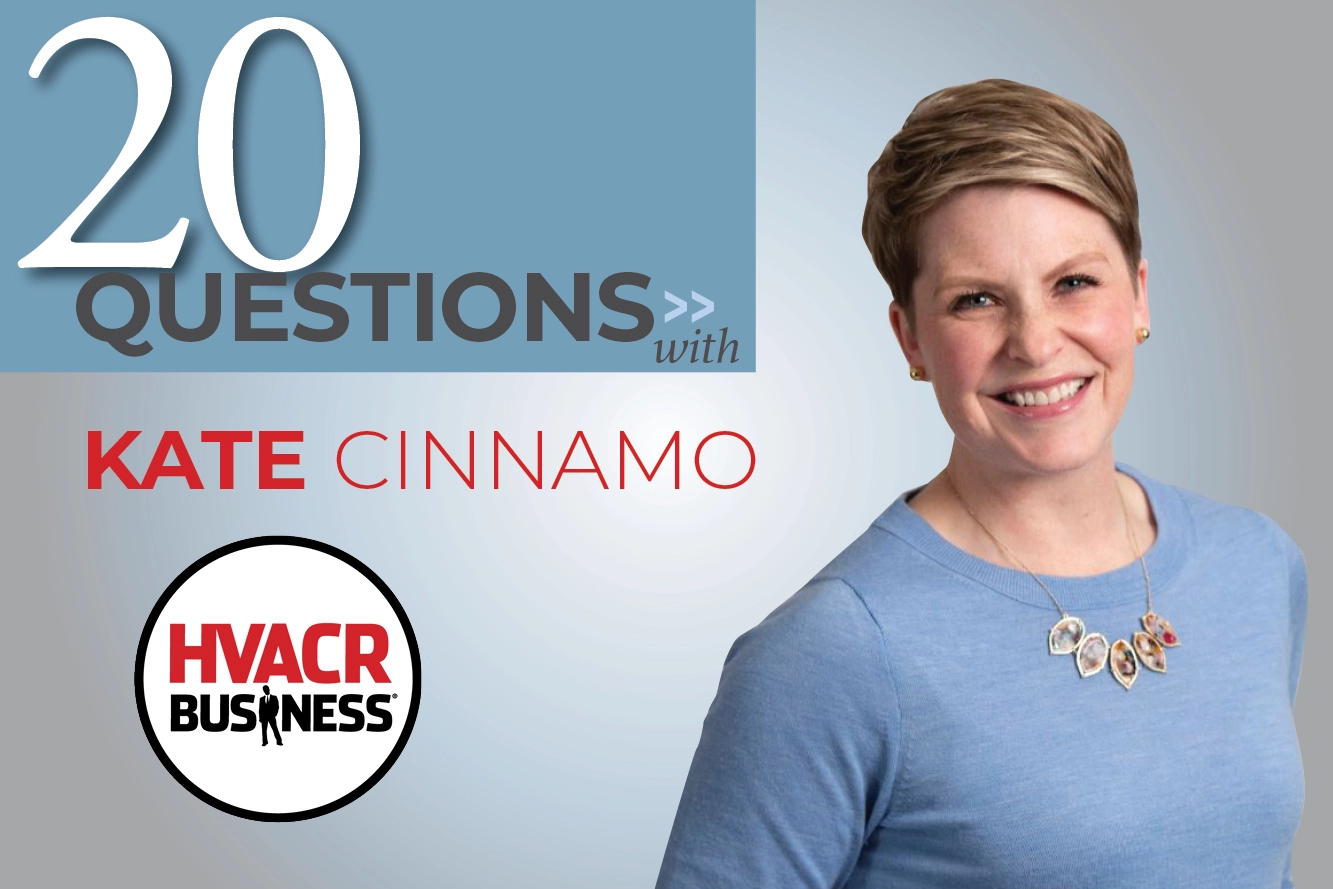HVACR Business Publisher Terry Tanker recently met with Winston Hancock, owner of Gilman Heating and Cooling in Ashland, Virginia, a 2014 Tops-in-Trucks Fleet Design Contest winner. The two discussed the company’s long history, the need to transition marketing to a professional firm and the importance of training and education.
1. What is your company’s history?
The company was started in 1917 by the Gilmanfamily. It was primarily a plumbing and heating company, because air conditioning had just recently been invented. The company was bought and sold once before, and the previous owner didn’t really focus on plumbing. But we’ve refocused the company to do plumbing again, along with HVAC.
2. How did you become involved in Gilman Heating and Cooling?
I got into the business in 1983 while in high school and worked for several companies up to 1993 then started my own company. I was doing some work at a gentleman’s house who just happened to be a business broker, and he mentioned that Gilman was for sale. I wasn’t actively looking to purchasea company, but began evaluating it and weighing my options. A year later, in 1996, I bought the company.
3. How did your son get involved in the business?
Andrew, who will be 19 in August, worked for us part time while in high school and became full time last June after he graduated. He’s in the service department now, running calls like everyone else.
4. Is this something he wants to do as a career?
Yes. He’s said he’s more interested in this technical trade, rather than college. That’s why he came on full time last year. He enjoys learning about the trade as much as he can. Recently he passed his Core Heat Pump certification, which has impressed me and makes me proud. We send him to every local training school we can.
5. Your website says all of your service technicians are certified — can you tell me more about that?
We have a policy that says, if you’re going to work here, you’re going to be NATE certified and you’re going to keep up with it. That puts pressure on the technicians who know when it’s time to recertify;they’d better study and they have to pass to be employed here.
6. How did you pick NATE over some of the other training and certification programs?
NATE has the biggest name recognition. I can’t say others who certify are even comparable to NATE. Part of our company story is that our leaders are NATE certified and we educate our customers on what that means.
7. What obstacles have you faced in getting your guys certified when only going through regular channels?
The most difficult aspect to training, we’ve seen, is finding the right training manual(s). There are several out there, but I don’t think they’re produced by NATE. Unfortunately, that side of the training doesn’t match the testing. In my opinion, they almost seem like they are written in a fashion that’s meant to trick you. I think the lack of a standardized study guide is the biggest problem with training.
8. I noticed you offer Precision Tune ups rather than clean and checks — are you a Ron Smith disciple?
I’ve read a lot of his materials and it just makes sense. There’s a reason why the term precision tune-ups is on our website though, and that’s because it’s a well-searched term — so it’s there for SEO. Internally, we call them Comfort Plans. But, customers can relate to both terms.
9. Gilman is a commercial and residential contracting firm — what is your business split?
It’s about 80 percent residential, and 20 percent commercial.
10. How many of your customers have service agreements?
Approximately 1,500 customers have service agreements.
11. You’ve built a comprehensive website — did you work from a specific plan or have you added to it overtime?
We worked with Mediagistic, an advertising agency out of Florida to develop our website. They’re also the company who developed our logo and our truck design.
12. How did you find Mediagistic?
A large portion of what they do is for HVAC contractors. One of my ACCA mixed group members started using them about six years ago, and I’ve been watching them since then and liked what they were doing.
13. You’ve got a great video series on your websiteanswering dozens of questions for customers — couldyou tell me more about them?
These came about from a suggestion by Mediagistic. They encouraged us to havea video series on our website, and part of our package with them included these videos.They gave us a list of options, and we picked the ones we thought our customers would relate to best. We have a weekly meeting with them where we discuss all of our marketing.
14. How did you come up with the G-man concept and associated logo and branding?
We used another marketing firm about seven years ago that helped us rebrand ourselves, and they came up with the big bold G. We switched gears and hired Mediagistic about a year and a half ago, but we already had the big G and we always talked about the G-man.
15. What changes did Mediagistic make to your branding?
When we switched, we were looking for a whole new look and feel for everything. They took the G and reworked it a little, and came up with the G-man theme and mascot. They tweaked the logo and gave us a new look. We were able to cross brand it and use it for all of our marketing.
16. How long did it take you to integrate the branding concept into the company?
We struggled for a long time before we made a company commitment to stop trying to do everything ourselves and hire some experts to help guide us. It was a huge process to get to where we are now, and it’s only been a year and a half. We wanted consistency in everything and the agency does it all — trucks, website, brochures, businesscards, newsletters, letterhead, social media, everything.
17.What type of customer feedback have youreceived?
With so much history behind the G-man, it’s opened the door to tell our company’s story. The G-man gives our customers a memorable mascot to associate with our company and children relate to the “superhero” aspect of him. And, we’ve found the bold colors really make a lasting impression.
18. How do your employees like the concept?
It’s been positive. They’ve rallied around the G-man concept, and they really love the new look and feel—they’re proud to be a part of it.
19. Who applied the decals on your fleet?
We worked with Joe Pike at Dixie Sign Co. here in Ashland, Va. We felt it was important to use local talent and they’ve done a wonderful job applying our concept.
20. Have you seen a return on investment regarding your fleet marketing campaign?
Yes. We’ve seen an increase in the amount of sales and service leads that have contacted us based on seeing our vans around town. We believe the investment in adding the G-man with our symbolic oversized red G gives our vans a “head-turning”appeal that people can easily identify.






